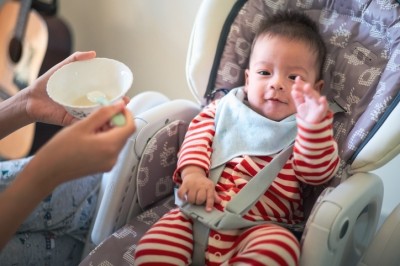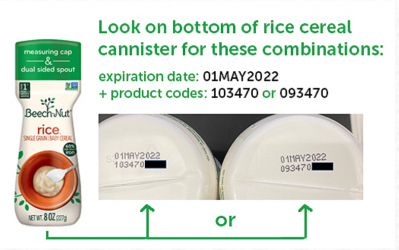Heavy metals in baby food: How should the food industry respond?

FoodNavigator-USA caught up with Jackie Bowen (JB), executive director at nonprofit The Clean Label Project, who says regulators are great at dealing with health issues caused by immediate acute exposure to foods (E.coli, salmonella, listeria), but don’t do so well when it comes to long-term exposure to low levels of environmental and industrial contaminants.
Bowen - who previously held technical, standards development and leadership roles at the WHO Collaborating Centre, NSF International, and domestic USDA organic certifier Quality Assurance International - has been accused by some industry stakeholders of scaremongering, but says she is trying to effect change by pushing brands to think more carefully about how they source raw materials.
Click HERE to read our recent coverage of the report just released by the Subcommittee on Economic and Consumer Policy in the House of Representatives exploring heavy metals in baby foods, which has already prompted a wave of proposed class action lawsuits.
FNU: Do baby food manufacturers routinely test raw materials or finished products for heavy metals?
JB: Sometimes, yes, but most of the time no. The food safety regulatory fabric in America is largely focused on pathogen and microbiological contaminants (E. coli, listeria, salmonella, etc). However, it's important to note that with the passing of the Food Safety Modernization Act, the FDA also implemented the Preventative Control Act, which make HARPCs a requirement.
HARPC (Hazard and Risk-Based Prevention Controls) requires virtually every food manufacturer, processer, packer, and storage facility to: identify food safety and adulteration hazards associated with their foods and processes, implement controls to minimize the hazards, verify that the controls are working, and design and implement corrective actions to address any deviations from the controls that might arise in a food safety plan.
Heavy metal contamination in the baby food supply chain and production process should be a preventative control that is accounted for within a FSMA compliant quality program.
FNU: How do firms decide what thresholds are ‘safe’ in the absence of regulatory guidance?
JB: It's important to note that the WHO, FDA, EPA, American Academy of Pediatrics, CDC, and American Medical Association all say there is NO safe level of lead. In the absence of federal regulation, it can be hard to determine what's 'safe,' but there are a few resources that brands can use to help determine what thresholds are reasonable.
First, while there may not be established federal tolerances, California Proposition 65 has established limits for Arsenic, Cadmium, Lead, and Mercury and is arguably the most consumer protective regulation in the US when it comes to heavy metals. The calculation for determining Proposition 65 compliance is pretty straightforward
1) Have your product tested by an ISO 17025 accredited analytical chemistry lab. Make sure that heavy metal testing in food is part of their scope and make sure that they can test down to single digit parts per billion.
2) When you get the test results back, it will be reported in parts per billion. Take that test result in parts per billion, divide it by 1000, and multiply it by the product's serving size in grams. The California Prop 65 tolerance for total arsenic is 10ug/serving, Cadmium is 4.1ug/serving, Lead is 0.5ug/serving and Mercury is non-detect.
Second, for us at Clean Label Project, we screen our certified brands for heavy metals, pesticides, plasticizers, and more. For Clean Label Project, we use an evidence-based approach. We tested over 500 of the top-selling baby foods and infant formulas in America. To be compliant with the Clean Label Project Purity Award standard, Clean Label Project samples product directly from grocery store shelves, have these products tested by an accredited analytical chemistry laboratory, and benchmarks the test results to the 500+ data set.
To qualify for the Purity Award, products need to be in the top 30% of the category. Think of it like making the honor roll, but the product's 'grade' is based on the analytical chemistry test results of how well it performed against other top selling similarly formulated products when it comes to sourcing clean ingredients. To date, we've had only about a dozen baby food brands qualify.
FNU: We’ve all heard the phrase, 'The dose makes the poison.' Should parents be worried about the ppb/trace kinds of quantities referenced in the report?
JB: Absolutely, parents should be concerned. The World Health Organization considers the first 1,000 days of life as critically important to long term health and wellness. Those first critical years are when optimum brain and immune system development are established. Parents are just trying to do best by their family. It's a matter of brands changing the way they think about food safety.
Compliance with federal regulations, think of that as the compass. Those are table stakes. Compliance with the evolving court of public opinion, that's the True North. Consumers are new arbiters of truth and safety with Moms serving as the Chief Operating Officer of their households. Over the past 5 years, there have been at least four consumer advocacy calls to action about heavy metals in baby food. Low level of repeat exposure to heavy metals has been linked to cancer and infertility. It is past time for brands to recognize that parents expect better.
As to the old adage that the dose is the poison, contaminants like lead are the exception that prove the rule: The Environmental Protection Agency, Food and Drug Administration, the World Health Organization, the Centers for Disease Control and Prevention, the American Medical Association and the American Academy of Pediatrics have all independently stated there is no safe level of lead for children. In this case, the poison is the poison.

FNU – To what extent is this issue on the radar in procurement teams at firms you’ve talked with?
JB: Regional variances on commodity contamination are absolutely on the radar of the procurement teams that I work with.
The reality is that so many brands perceive ingredients to be commodities. But when you actually test the rice, the cassava flour, the lentils, the sweet potatoes, you see significant variances in product purity AND nutrient density. The truth of the matter is that often times, the price of the ingredient is the exact same.
The onus is on brands to do their homework- get more bang for your buck! Establish supplier assurance programs that screen for heavy metals. Especially for high-risk products. Heavy metals testing is about $150, this is not an expensive investment in quality assurance and consumer trust. Create a risk-based testing model to help focus on the ingredients you use that are of greatest risk of heavy metal contamination.
FNU: Do you agree with the recommendations in p6 of the report for mandatory testing, labeling and should the FDA set maximum levels of toxic heavy metals permitted in baby foods?
JB: Clean Label Project is a big proponent and supporter of testing, setting evidence-based heavy metal contaminant thresholds, and putting more information in the hands of consumers to make more informed choices for themselves and their family.
Baby food brands have defended their procurement and testing protocols after a congressional report highlighted the presence of heavy metals in their wares.
The report – which will likely prompt lawsuits, predict attorneys - underlines the need for the FDA to set upper limits for lead, mercury and other metals in infant foods, say experts.

















